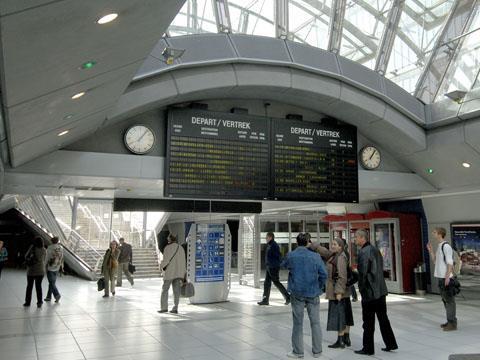
BELGIUM: SNCB announced on January 14 that it had completed a €45m reconstruction of Brussels Luxembourg station, after a 15-year remodelling triggered by the construction of the European Parliament buildings nearby.
Previously known as the 'Gare du quartier Léopold', the station has been rebuilt as a fully-underground facility, but constructed in such a way that allows as much daylight as possible to penetrate to the platforms.
Extensive acoustic protection measures have been incorporated to prevent noise and vibrations reaching the surrounding buildings, particularly the European Parliament which in part is built above the station.
Surmounted by a pedestrian walkway of 22 000 m², the rebuilt station is fully accessible for disabled people. It is equipped with CCTV, and has a centralised system to monitor and control energy use.
Luxembourg station is destined to become an important node in the emerging Brussels RER network. Currently served by Line 26 linking Mechelen, Vilvoorde and Halle and by Line 161 from Brussels to Lovain-la-Neuve, Namur and Luxemburg, it handled an average of 13 000 passengers per working day in 2006.
The remodelling incorporates stained glass windows retrieved from the original structure, which was opened in 1854 by La Grande Compagnie du Luxembourg, a British promoter set up to develop a railway linking London, Oostende and Luxemburg. After the concession ended 1873, the line was integrated into the state-owned network. Between 1931 and 1958 the station was also the starting point for the line to Tervuren, which was the first privately-operated railway in Belgium to be electrified at 1·5 kV DC.



















